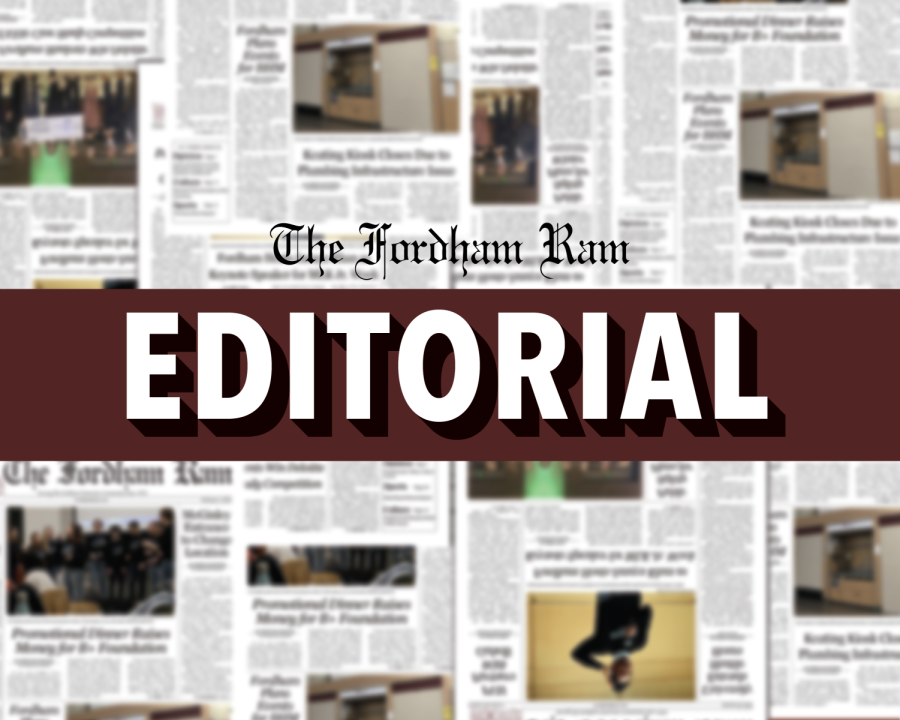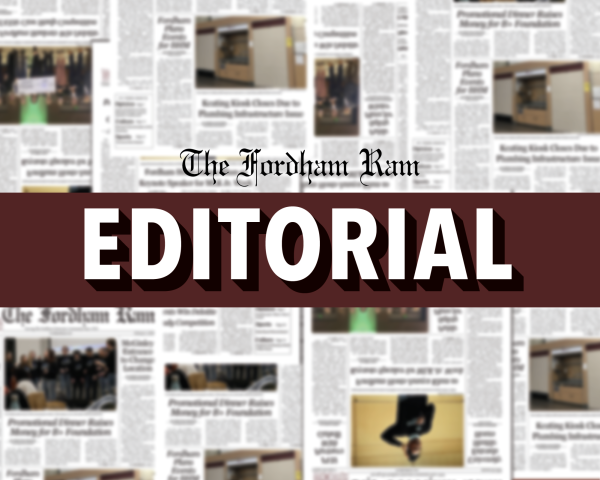Fordham: The Bronx’s Burden
Last week, The Fordham Ram published a video highlighting various student opinions regarding university students’ impact on the Bronx community. Students expressed nuanced positive and negative views. On the positive side, students said the university has aided the Belmont community economically by supporting local businesses. On the negative, students noted the nuisance that student nightlife can become.
While it is fair to say that the economic boost that Fordham students have given to local businesses is substantial, the same boost has also had largely negative effects on locals who are not small business owners. All you need to do, for example, is compare the cost of living in Belmont, the neighborhood south of Rose Hill and where students live off campus, to the average household income of local Bronx residents.
An economic analysis by the New York Times showed that as of 2017 the average Fordham student comes from a household whose median income is about $151,000. Compare this to the median household income in Belmont, Crotona Park East and Tremont: $29,158.
When Fordham students begin moving off campus and renting apartments in the Belmont neighborhood, their wealth advantage creates an economic disparity between local real estate companies and Bronx residents. Real estate companies will raise their prices on apartments and housing units to accommodate the wealthier class of students, creating an environment in which economically disadvantaged locals can no longer afford rent in their neighborhoods. This is the basic rule of gentrification.
Well-intentioned finance advisors will often talk about the 30% rule — monthly rent should cost just 30% of the renter’s average monthly income. According to the NYU Furman Center for Real Estate and Urban Policy, as of 2019, only 27% of rental units in Belmont and East Tremont fit within the 30% for local residents. Residents are much more likely to obtain an apartment if they are willing to allocate 80% of their monthly income to rent (not including other factors of living like utilities, groceries or transportation). The same demographic analysis showed that low-income and severely rent-burdened households make up 43% of households in the neighborhood.
Affordable housing is nearly impossible to find in the area, with the most expensive housing just blocks away from Fordham’s campus (where a two-bedroom apartment below $1,600 is functionally nonexistent). While apartments tend to get cheaper farther away from campus, the price decrease is negligible.
This is not a stagnant or declining trend. If anything, this trend is on the rise and shows no sign of stopping.
It’s important to note that, for the most part, this gentrification seems to be mostly focused around Belmont and residential areas. Commercial zones, like Fordham Road, benefit from the economic injection brought forward by students who can afford to spend more. However, this also has a negative consequence for locals. Business owners will respond to the adapting neighborhood and raise their prices to an affordability accessible to Fordham students, but not so much to locals. This process works much the same way as it does for housing.
In a space undergoing gentrification, one of the basic living needs — housing — is treated no differently than coffee.
Beyond the negative economic impact on locals, student life off campus can also be incredibly disruptive to the neighborhood and its residents. Every Friday night, swarms of students roam the streets searching for parties. For working-class residents who have to wake up early for morning shifts on Saturday or Sunday mornings, having Fordham students loudly and obnoxiously partying until 2 a.m. directly outside their apartments is disturbing.
The morning after, empty cans, vomit and general trash generated by the previous nights’ misadventures dirty the neighborhood’s streets.
All in all, student life encroaching on local streets ultimately does more harm than good. It’s crucial to remember that if we want to do better and keep the peace around us, the best we can do is have respect for our neighborhood and those who live in it.












































































































































































































Erica • Sep 27, 2022 at 9:07 pm
Knowing Fordham’s problematic positioning in the surrounding Bronx community, I sought to be the model Fordham student. I tried to be as quiet, courteous and self-effacing as humanly possible. I was terrified of getting in someone’s way, of even being a minor inconvenience, because I knew I was the outsider there.
I graduated this spring, and I live in Brooklyn now, specifically in Bed–Stuy. It’s much different than the Fordham-in-the-Bronx community that I’ve known for the past four years. After finishing my workout last week at the local Y, I traipsed back the locker room to find a local woman sitting in front of my locker. Anxiety flashed through me. I’d have to get past her to get to my locker, but would that be bothering her? I didn’t want to get in her way. I didn’t realize it at the time, but I was still channeling the self-effacing model Fordham student that I’d taught myself to be.
And she called me out on it. “You looked so scared of me,” she said. “You looked at me like—like when someone comes up to you on the street, and you don’t know what they’re going to do next. And I thought, why was she so scared? I get it, you know, I’m older, I’m Black. But feel me.” She grabbed my hand. Hers was soft, warm, grandmotherly. “I’m not scary.”
My heart broke. I’d been so focused on being the model Fordham student that I didn’t even realize I had no idea how to be an actual member of a community.
At Fordham, I got used to feeling like a parasite on the Bronx around me. I’m slowly realizing that’s not the case. Fordham may be the Bronx’s burden, but I’m not a burden in and of myself. Going forward, it’ll be a constant struggle to remember that and unlearn the patterns that Fordham inadvertently taught me.